
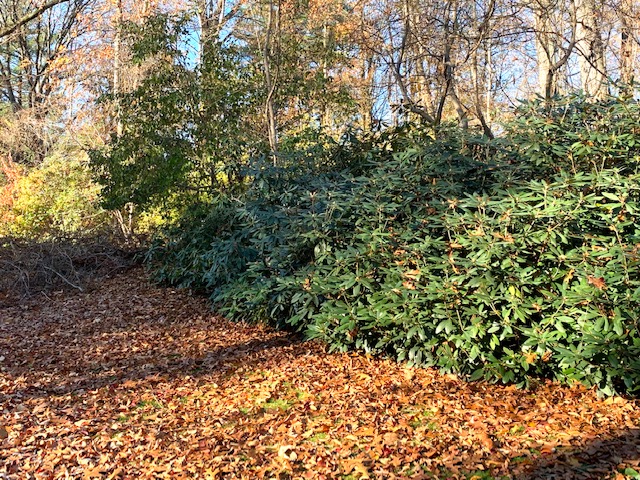
Today on our Around the Grounds blog, we talk about an important issue for homeowners. Learn about what to do with your leaves and the best way to maintain sustainable lawncare.
continue reading

Today on our Around the Grounds blog, we talk about an important issue for homeowners. Learn about what to do with your leaves and the best way to maintain sustainable lawncare.
continue reading

Today on our Around the Grounds blog we aim to inspire you with some under-used native shrubs to replace the traditional ornamental ones that often decorate modern suburban landscapes.
continue reading
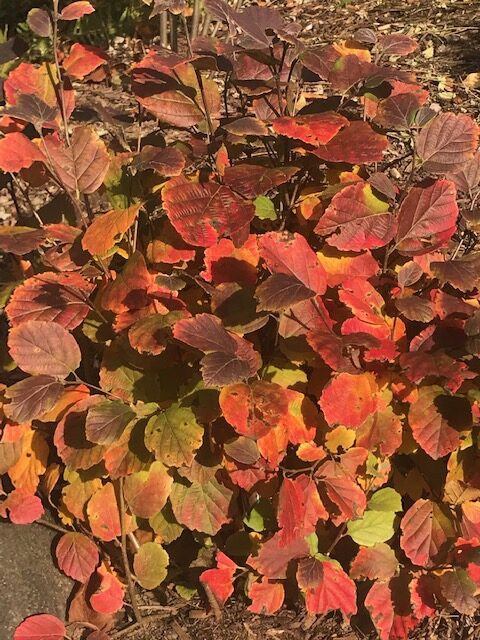
Today on our Around the Grounds blog, we introduce you to a very “not-boring” shrub–fothergilla! This native shrub flaunts impressive colors that span three seasons. Read more in our latest post.
continue reading
In front of the Manor House at the Nature Center, there are two species of dogwood trees. One is the native Flowering Dogwood (Cornus florida), and the other is the non-native Korean or Japanese dogwood (Cornus kousa). Particularly at this time of year, the critical benefits of the native tree become obvious.
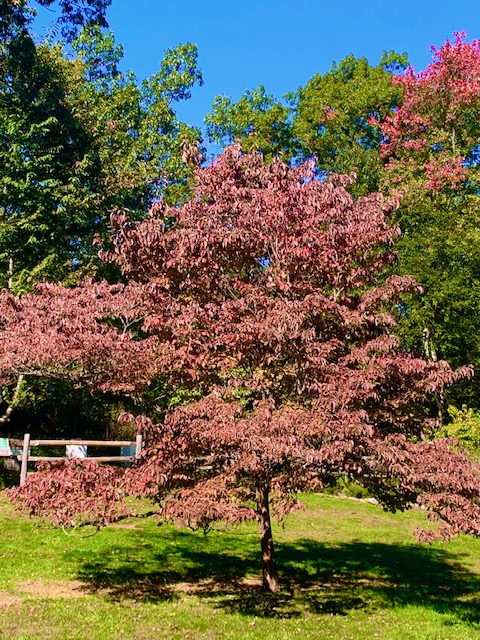
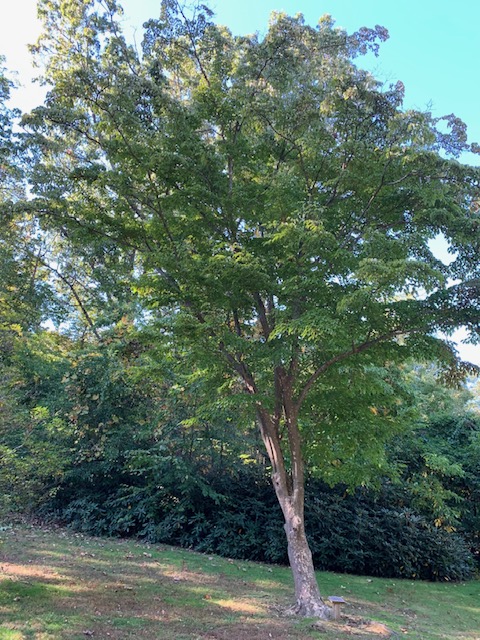
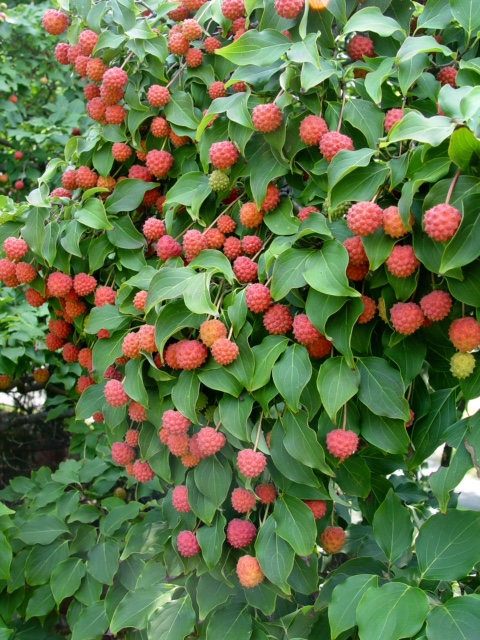
Plant species evolved together with animal species living in the same habitat. Flowering Dogwood evolved here, in Eastern North America, along with the insects, birds, and mammals native to our forests. Kousa dogwood evolved in Asia with the animals native there – very different animals.
Both species of dogwood have beautiful spring flowers, but the native Flowering Dogwood blooms weeks earlier – just as local pollinators emerge looking for nectar and pollen. Kousa dogwood blooms much later in the spring. By then, lots of other flowers have emerged and the need for early-season nectar and pollen is less crucial.
By the end of the season, the timing of these two species is reversed. Kousa dogwood produces its showy red berries early — in August. The berries of the Flowering Dogwood, on the other hand, start to ripen in October — just as songbirds need them to fuel their migration.
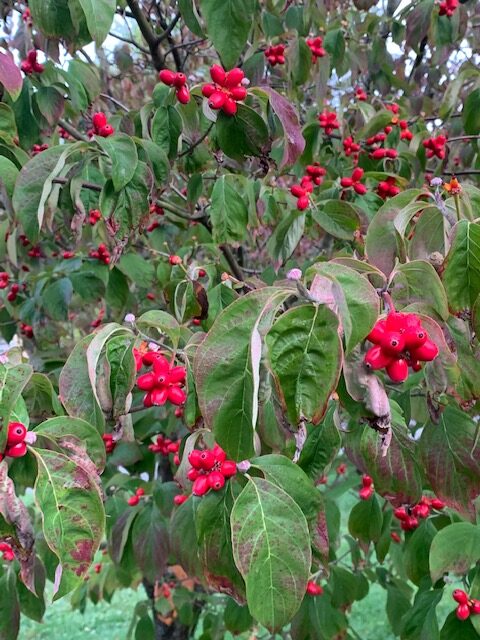
In Asia, Kousa berries are eaten by monkeys and other indigenous wildlife. Here, those berries are largely ignored. The berries are too big for songbirds. Squirrels and chipmunks aren’t interested either. Instead, Kousa berries end up where they fall, mashed by foot traffic and lawnmowers.
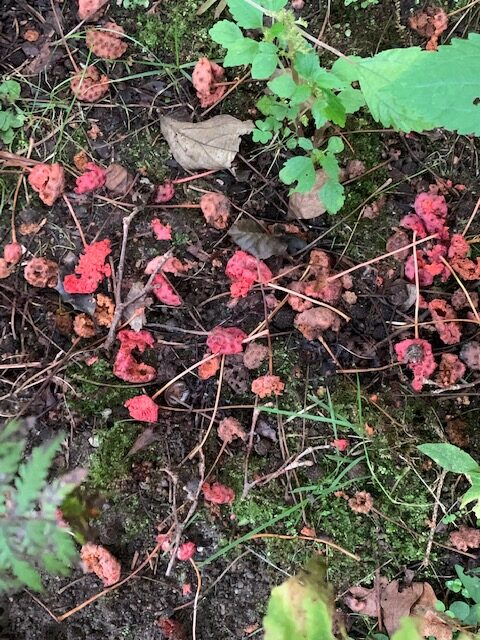
The berries of the Flowering Dogwood are an essential food source for migrating songbirds because they are full of nutritious fats and proteins. We have seen flocks of migrating birds descend on a Flowering Dogwood and clean it out of berries in a few days. Any berries that do hit the ground are quickly carried off by squirrels and chipmunks.

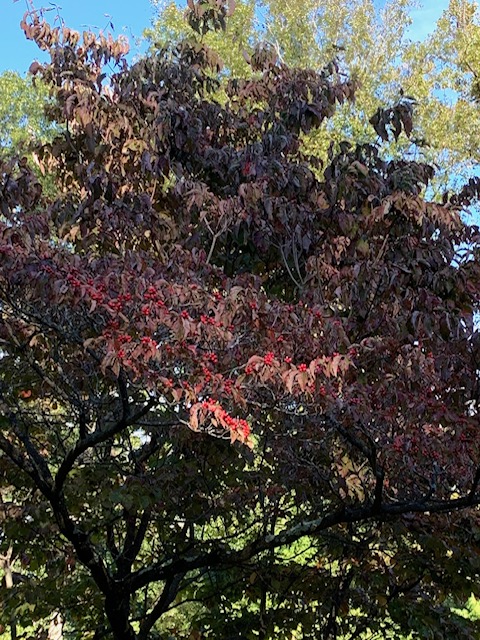
Nurseries and garden magazines may tell you that Kousa dogwood is a better choice for home landscapes than native dogwood because the Asian variety is more resistant to disease. The disease in question is anthracnose, a fungus that first appeared in the US in the 1970’s and quickly became lethal to native dogwoods. Research strongly suggests that the fungus actually was introduced to the US by importation of the Asian dogwood. Kousa dogwoods are more resistant to the fungus because they co-evolved with it and developed resistance over time. American dogwoods did not have that opportunity. The arrival of the fungus here was a near-disaster for this iconic American tree.
Fortunately, growers immediately began developing resistant varieties of Flowering Dogwood. “Appalachian Spring” was one of the first varieties to successfully fend off the disease. Other disease-resistant varieties are readily available now. “Cherokee Brave” and “Cherokee Chief” have pink flowers, while “Cherokee Princess” blooms in white. These trees do very well in our area. They prefer sun or part shade in well-drained soil, and benefit from organic fertilizer or compost. In periods of drought, they will need supplemental water. They never get too tall, and they make spectacular lawn trees.

If you’re looking for an ornamental tree with gorgeous spring flowers, great fall color, and an important role to play in the local ecology, skip the non-natives. You really can’t do better than Cornus florida, our own Flowering Dogwood.
This blog is authored weekly by Cathy Ludden, local expert and advocate for native plants and Board Member, Greenburgh Nature Center.

We have a new love at the Nature Center.
Dicentra eximia, a native plant commonly called Fringed Bleeding Heart, started blooming here in May and continued blooming right through Halloween! It has lacy, soft green foliage that stays fresh from early spring through pumpkin time. Its flowers are little red and pink hearts with a “droplet” at the tip. Bees love them, and now, so do we.
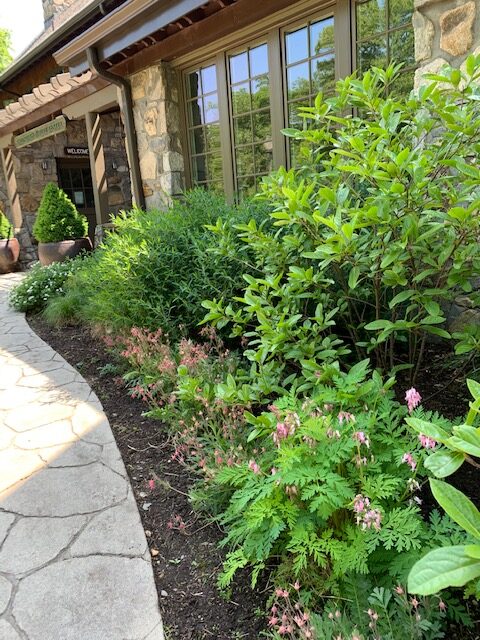

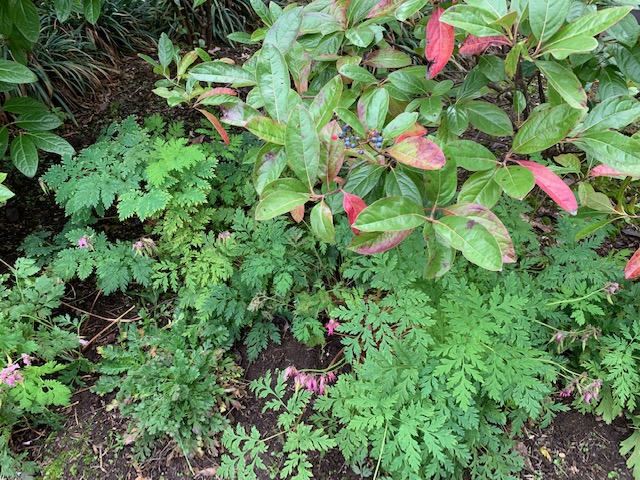
We planted Fringed Bleeding Heart two years ago in front of the Manor House, mostly to fill in until our new shrubs got big enough to occupy the space. The soil there is not rich at all, and the building faces west. Though the overhanging eves protect the flower bed from full sun at mid-day, it is definitely not a shady area. You could think this was a questionable planting decision, since most sources say that Dicentra eximia needs rich, moist, fertile soil, and part or full shade.
We are starting to suspect that this advice comes from gardeners more familiar with the non-native bleeding heart (Laprocapnos or Dicentra spectabilis), an old garden favorite that originated in Asia. That plant definitely wants rich soil, steady moisture, and shade. It has lovely flowers, but it also goes dormant after blooming and disappears completely by late spring.
Fringed Bleeding Heart, on the other hand, originated in the Appalachian Mountains where the soil is often rocky and dries out between rainfalls. Though it can be found on shady forest floors where the soil is rich and moist, it also grows on rocky ledges with thin soil and more sun. We are starting to think this plant is tougher than most gardeners believe.
We are testing that theory by including a big patch of Dicentra eximia in the new Pollinator Garden we planted last June. Most of the other plants in that garden are tough, sun-loving, drought-tolerant perennials and grasses. But right there, in the slim shadow of a small Redbud tree, we included Fringed Bleeding Heart. The soil is poor and dry, for the most part – exactly what the other pollinator-friendly plants prefer. The Fringed Bleeding Heart gets a bit of shade from the tree, but is otherwise exposed.
And this is how it’s done so far:

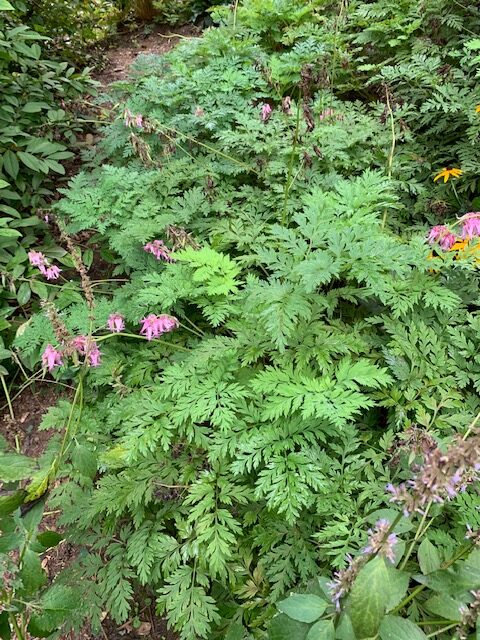
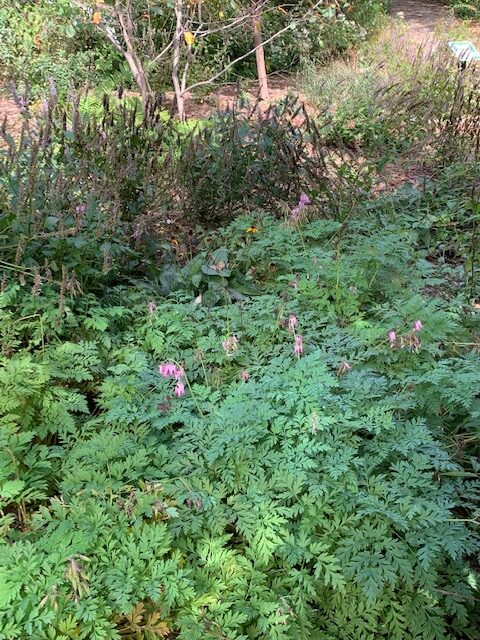
A native plant that literally blooms its little hearts out for you all season long?
Oh yes, we’re definitely in love!
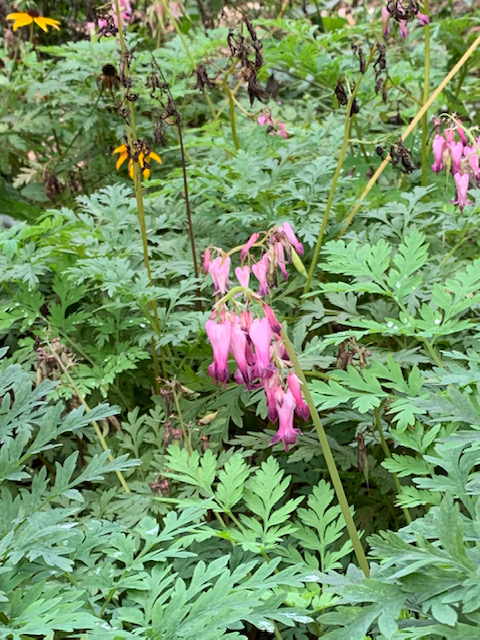
This blog is authored weekly by Cathy Ludden, local expert and advocate for native plants and Board Member, Greenburgh Nature Center. Follow Cathy on Instagram for more photos and gardening tips.